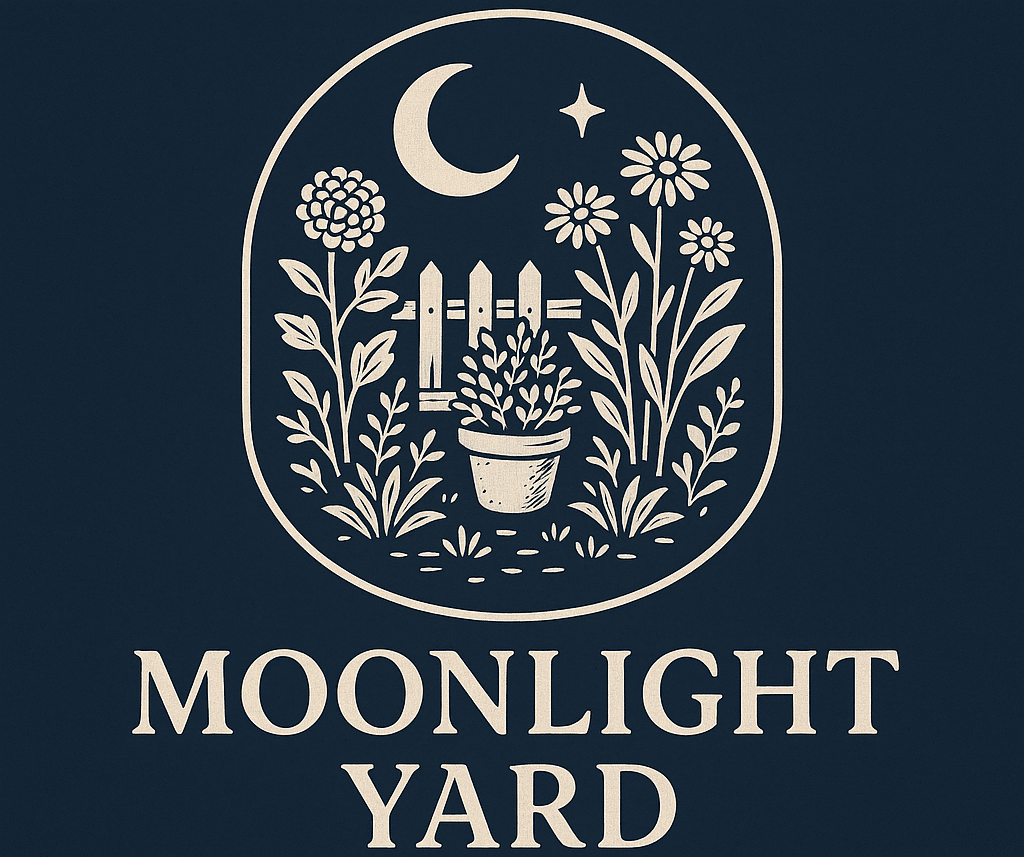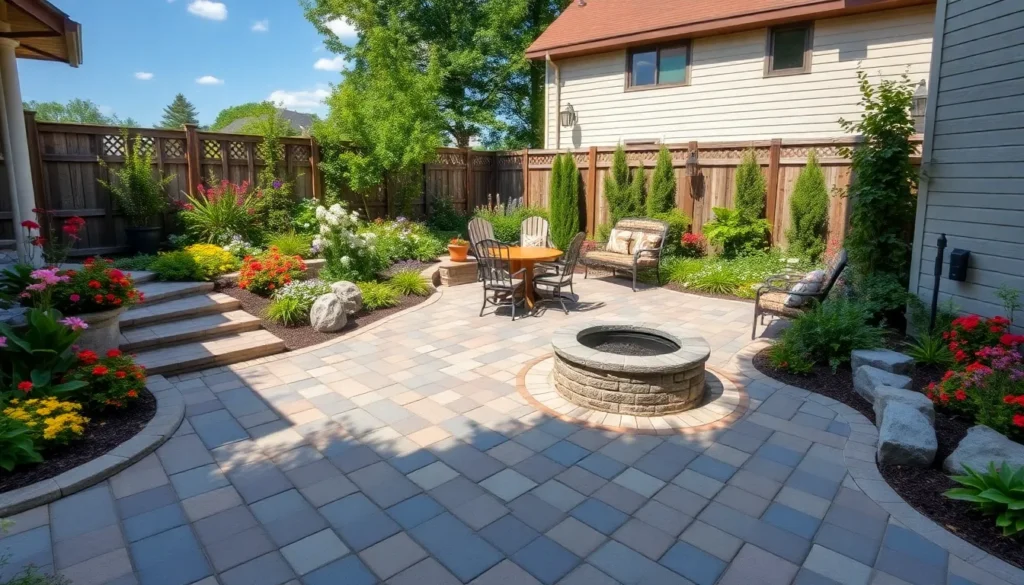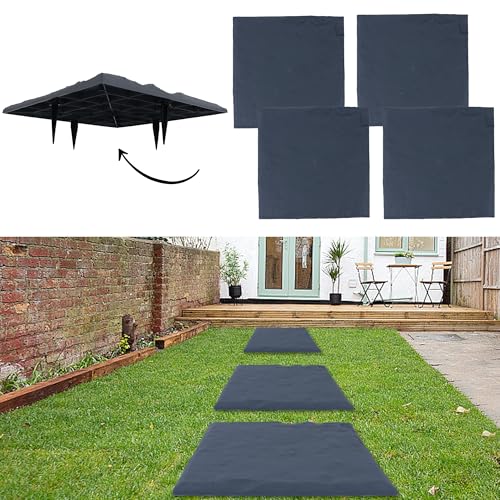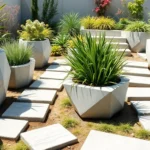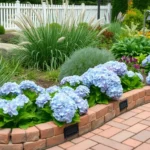Transforming your garden into a stunning outdoor oasis doesn’t have to expensive or require professional landscaping skills. Garden pavers offer one of the most versatile and cost-effective ways to add structure beauty and functionality to any outdoor space.
We’ve discovered that the right paver design can completely revolutionize how you experience your garden – from creating elegant walkways that guide visitors through your favorite plantings to establishing cozy seating areas perfect for morning coffee or evening relaxation. Whether you’re working with a compact urban plot or sprawling suburban yard pavers provide endless creative possibilities.
The best part? Paver installation is surprisingly accessible for DIY enthusiasts while offering professional-grade results that boost your home’s curb appeal and property value. From classic brick patterns to modern geometric designs we’ll explore creative ideas that’ll inspire your next garden makeover project.
Create Stunning Walkways With Natural Stone Pavers
Natural stone pavers offer unmatched durability and timeless beauty for garden walkways. We’ll explore three premium options that transform ordinary paths into stunning industry features.
Flagstone Pathways for Rustic Charm
Flagstone creates the perfect rustic walkway with its irregular shapes and natural textures. We love how these stones develop unique weathering patterns over time, improving their organic appeal. Installing flagstone pavers requires minimal cutting since their natural variations fit together like puzzle pieces.
Benefits of flagstone pathways include:
- Slip-resistant surfaces even when wet
- Natural drainage between irregular joints
- Long-lasting durability in all weather conditions
- Unique color variations from gray to reddish brown
Pennsylvania bluestone and Tennessee fieldstone represent the most popular flagstone choices for garden walkways. We recommend spacing flagstone pieces 2-3 inches apart to allow for proper drainage and plant growth between joints.
Slate Pavers for Modern Elegance
Slate pavers deliver contemporary sophistication with their smooth surfaces and consistent thickness. We appreciate how slate maintains its rich colors and refined appearance year after year. These pavers work exceptionally well in geometric patterns and straight-line installations.
Key advantages of slate walkways:
- Uniform thickness for level installation
- Low maintenance requirements
- Resistance to staining and fading
- Available in multiple color options including charcoal, green, and purple
Welsh slate and Vermont slate offer premium quality for high-end garden walkways. We suggest using slate pavers that are at least 1 inch thick to prevent cracking under foot traffic.
Sandstone Options for Warm Appeal
Sandstone pavers bring warm earth tones and inviting textures to garden pathways. We find that sandstone complements both traditional and Mediterranean industry designs beautifully. This natural stone provides excellent traction while maintaining an elegant appearance.
Popular sandstone varieties for walkways:
| Type | Color Range | Best Use |
|---|---|---|
| Buff Sandstone | Cream to golden yellow | Formal gardens |
| Red Sandstone | Pink to deep red | Cottage gardens |
| Gray Sandstone | Light to dark gray | Modern landscapes |
Arizona sandstone and Indian sandstone represent cost-effective choices that deliver professional results. We recommend sealing sandstone pavers every 2-3 years to protect against weathering and maintain their vibrant colors.
Design Elegant Patio Spaces Using Brick Pavers
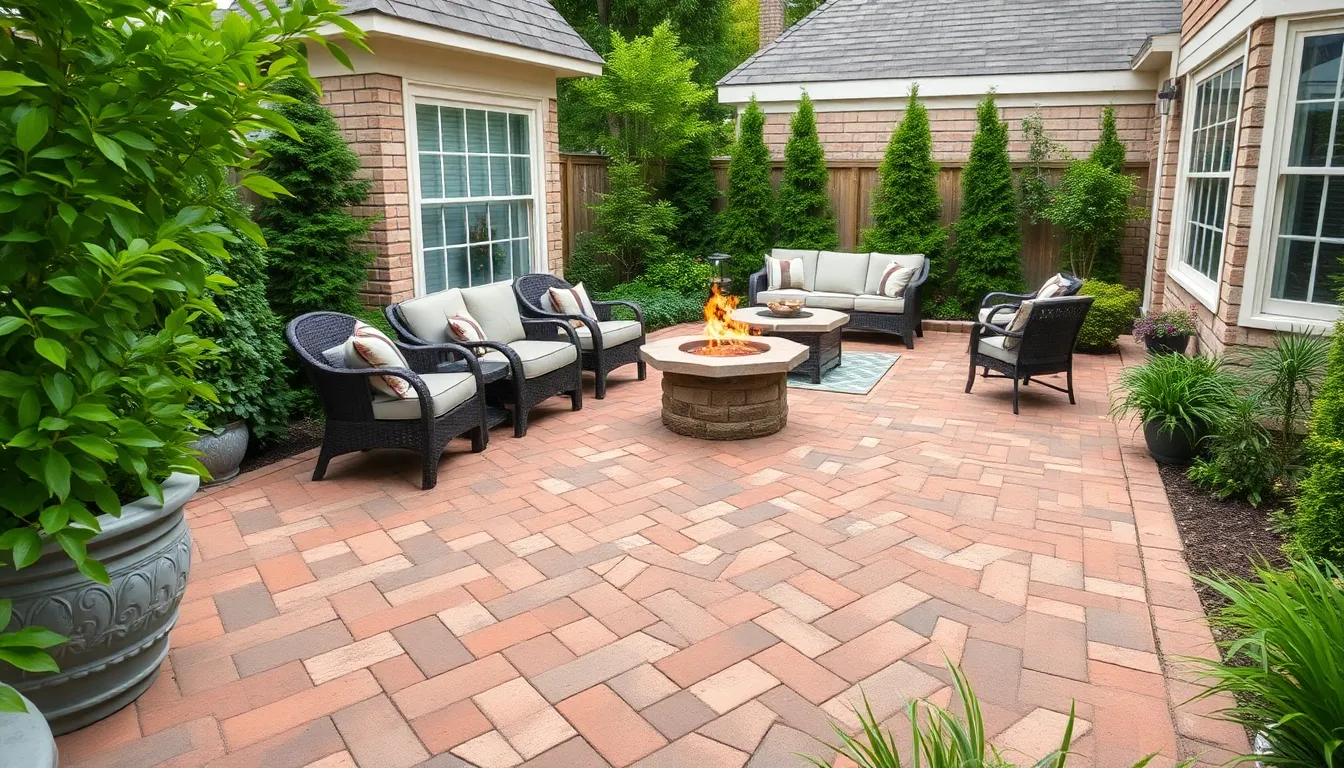
Brick pavers bring timeless sophistication to outdoor spaces while offering exceptional durability and design flexibility. We’ll explore three proven approaches that transform ordinary patios into elegant gathering spaces.
Traditional Red Brick Layouts
Traditional red brick pavers create a classic foundation that complements both modern and traditional outdoor settings. We recommend this versatile style for homeowners seeking a timeless aesthetic that never goes out of fashion. Red brick layouts work exceptionally well in established neighborhoods where matching existing architectural elements enhances overall property appeal.
These pavers maintain their rich color over decades of use while requiring minimal maintenance compared to other patio materials. Straight running bond patterns offer clean lines for contemporary spaces while basket weave arrangements provide traditional charm. Installation proves straightforward for DIY enthusiasts since standard rectangular shapes align easily without complex cutting requirements.
Herringbone Patterns for Visual Interest
Herringbone patterns transform ordinary brick installations into sophisticated outdoor masterpieces that capture attention from every angle. We particularly favor this design for its ability to create visual movement across larger patio spaces where simple layouts might appear monotonous. The interlocking V-shaped arrangement adds structural stability while delivering unmatched style appeal.
This pattern works especially well with traditional brick pavers since the uniform shape creates perfect alignment points throughout the installation. Diagonal orientations make patios appear larger while straight herringbone patterns emphasize exact directional flow toward focal points like outdoor kitchens or fire features. Professional contractors often recommend herringbone layouts for high traffic areas due to their exceptional load distribution properties.
Mixed Brick Colors for Custom Appeal
Mixed brick colors allow homeowners to create personalized patio designs that reflect individual style preferences while maintaining cohesive outdoor aesthetics. We suggest combining complementary shades rather than contrasting colors to achieve sophisticated depth without overwhelming visual chaos. Popular combinations include warm reds with burnt oranges or cool grays with charcoal accents.
This approach works particularly well when matching existing industry elements like natural stone retaining walls or architectural features on nearby structures. Random color distribution creates organic appeal while planned patterns using alternating shades deliver more formal appearances. Custom color mixing also helps blend new patio installations with existing hardscape elements throughout the property.
Build Functional Garden Borders With Concrete Pavers
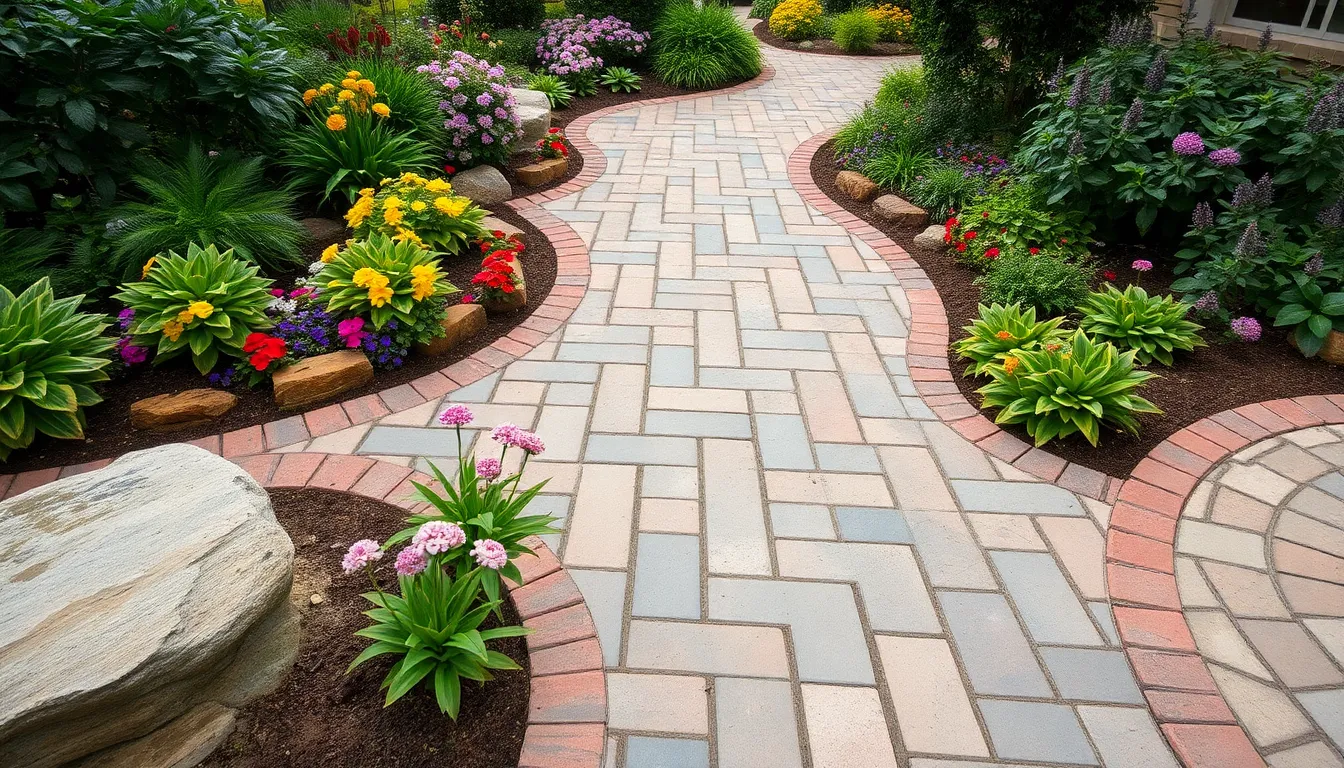
Concrete pavers offer exceptional versatility for defining garden spaces while providing practical answers for soil management and maintenance. We can create clean transitions between different yard areas using these durable materials that help prevent erosion and establish clear boundaries.
Interlocking Pavers for Clean Lines
Interlocking pavers eliminate the need for mortar while delivering professional results that rival traditional masonry work. Pattern variety becomes limitless with herringbone, brick, and running bond designs that add visual interest to garden borders and pathways. Easy installation makes these pavers perfect for DIY enthusiasts who want to tackle weekend projects without hiring contractors.
We recommend starting with simple running bond patterns for beginners, then advancing to more complex herringbone designs once you’ve mastered the basics. Stability increases significantly when pavers lock together, creating borders that withstand weather changes and ground movement better than individual stones.
Decorative Concrete Shapes and Textures
Unique designs emerge when we incorporate pavers with varied shapes like hexagons, circles, and irregular flagstone patterns into garden features. Textured surfaces provide both aesthetic appeal and practical benefits, offering better traction around water features and sloped areas. Blend with industry goals by selecting pavers that complement existing hardscape elements and natural surroundings.
Natural stone textures work particularly well for traditional gardens, while smooth geometric shapes suit contemporary outdoor spaces. We’ve found that mixing two complementary textures creates depth without overwhelming the overall design scheme.
Colored Concrete Options for Personality
Colorful accents transform ordinary garden borders into eye catching focal points that draw attention to exact industry features. Match the color palette to your home’s exterior or existing garden decor to maintain design cohesion throughout the outdoor space. Personalized style emerges when we combine neutral base colors with bold accent pavers strategically placed near benches, fire pits, or water features.
Earth tones like terracotta and sandstone complement most garden styles, while cooler grays and blues work well in modern minimalist designs. We suggest limiting your color palette to three complementary shades to avoid creating visual chaos in smaller garden spaces.
Incorporate Permeable Pavers for Eco-Friendly Solutions
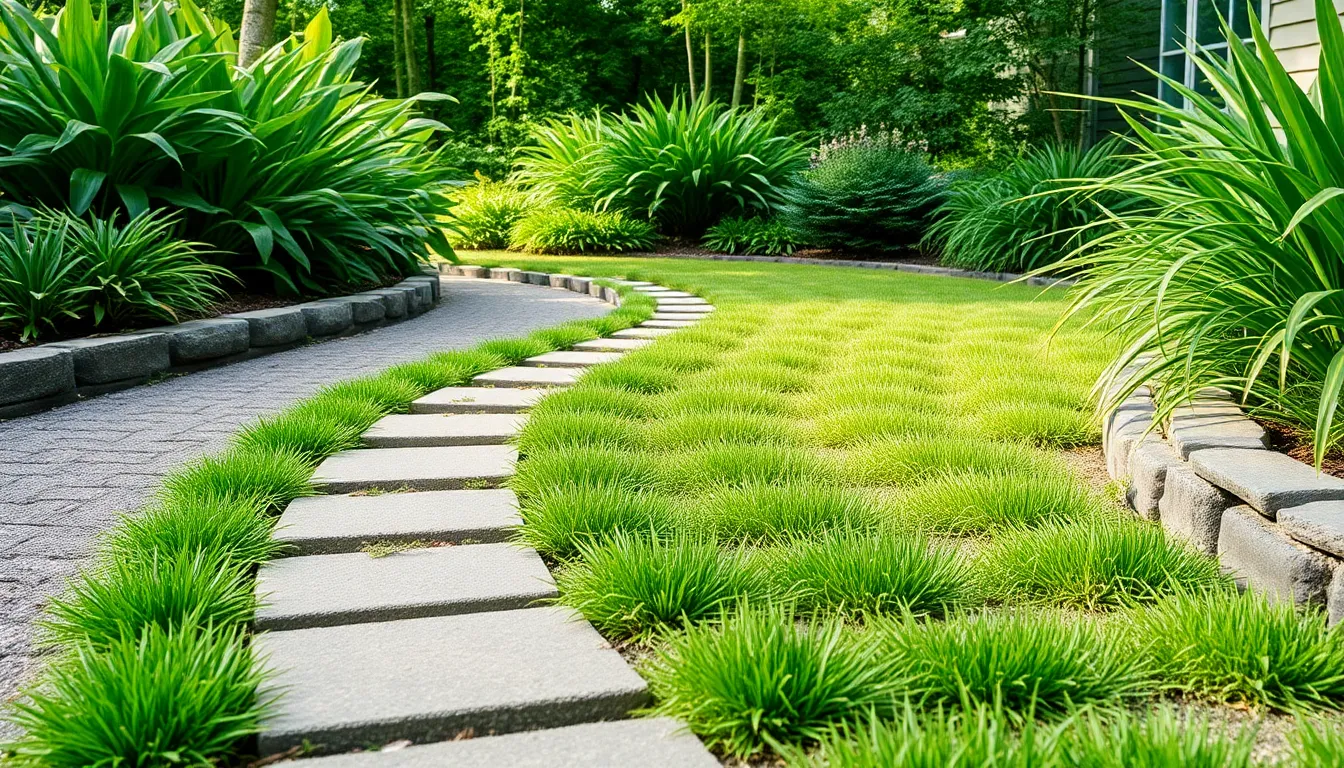
We’re transforming garden design with permeable paver answers that deliver both environmental benefits and stunning visual appeal. These innovative pavers reduce stormwater runoff while absorbing less heat than traditional surfaces, effectively lowering the urban heat island effect in our outdoor spaces.
Grass Pavers for Green Driveways
Benefits of grass pavers create natural aesthetics while managing water runoff efficiently. These permeable surfaces allow grass to grow through designated openings, providing the structural integrity of pavers with the environmental advantages of living ground cover. Driveways and parking areas benefit from this dual functionality, as grass pavers support vehicle weight while maintaining natural drainage capabilities.
Installation locations for grass pavers include driveways, overflow parking areas, and fire access lanes. We recommend these answers for homeowners seeking sustainable alternatives to traditional concrete surfaces. Garden spaces requiring both vehicular access and natural beauty find grass pavers particularly effective, as they blend seamlessly with surrounding landscaping while providing necessary load bearing capacity.
Gravel Filled Pavers for Drainage
Drainage efficiency improves dramatically with gravel filled pavers that feature large gaps designed for water infiltration. These pavers incorporate strategically placed openings filled with permeable gravel materials, allowing rainwater to drain efficiently through the surface. Standing water issues become minimal with this paver type, as the gravel component facilitates immediate water absorption and soil penetration.
Maintenance requirements decrease significantly compared to solid paving surfaces. We find that gravel filled pavers self regulate moisture levels while requiring only occasional gravel replenishment. Garden paths and walkways benefit from this low maintenance approach, as seasonal weather changes don’t create the same expansion and contraction issues found in solid concrete installations.
Porous Concrete for Water Management
Water management capabilities of porous concrete allow liquid to drain directly through the material surface. This specially designed concrete maintains traditional appearance while incorporating microscopic channels that help water movement. Runoff reduction occurs naturally as rainwater filters through the porous structure, removing pollutants and contaminants before reaching local water sources.
Application areas for porous concrete include walkways, driveways, and patio surfaces where traditional concrete aesthetics are desired. We recommend this option for homeowners wanting conventional concrete appearance with enhanced environmental performance. Installation projects benefit from porous concrete’s ability to handle standard foot traffic and light vehicle loads while providing superior drainage compared to traditional concrete surfaces.
Add Creative Accents With Mosaic and Tile Pavers
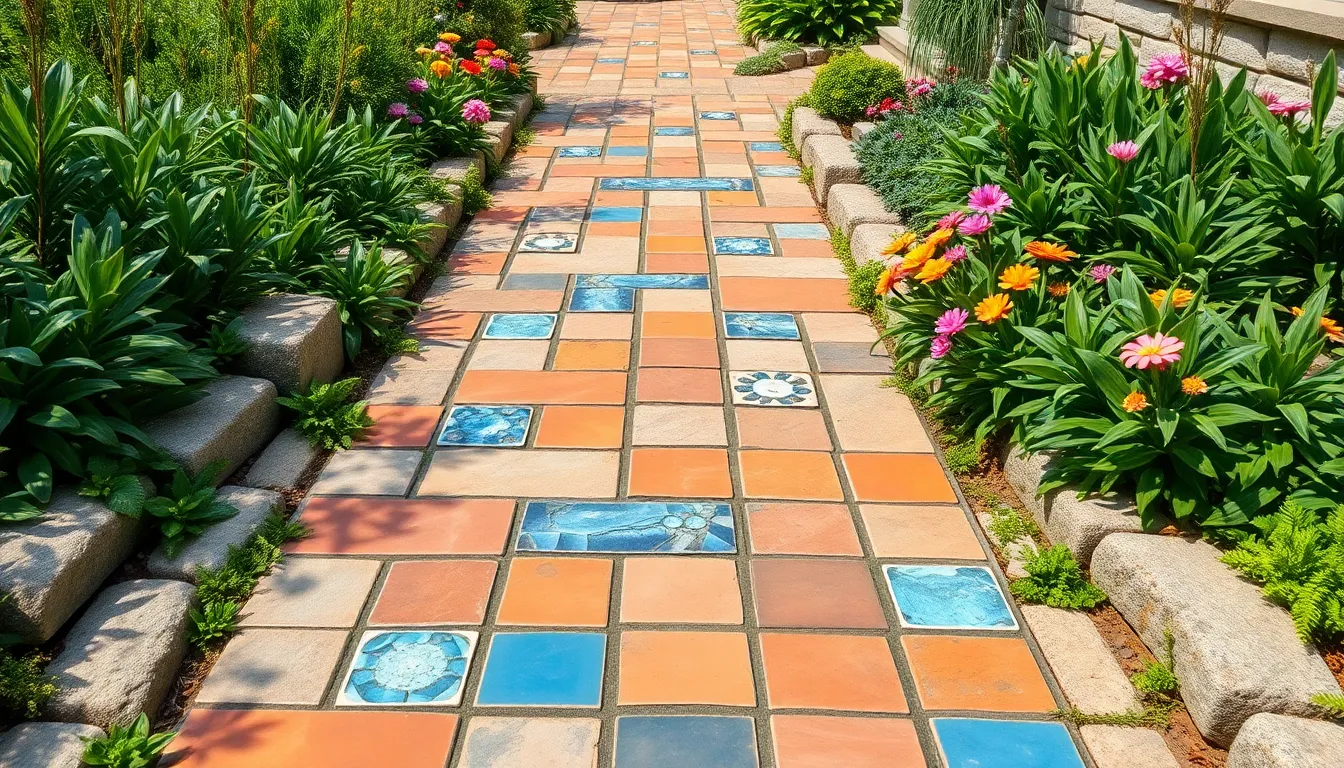
Transform your garden pathways and patios into artistic masterpieces by incorporating decorative elements that catch the eye and reflect your personal style. These creative accents allow you to move beyond standard paver layouts and create truly unique outdoor spaces.
Ceramic Tile Patterns for Mediterranean Style
Ceramic tile patterns bring Old Industry charm to your garden design with their rich colors and intricate motifs. We recommend incorporating geometric patterns like quatrefoil or arabesque designs that mirror traditional Mediterranean architecture. Floral motifs work particularly well when arranged in repeating patterns along walkway centers or as focal points within larger paver sections.
Choose warm terracotta, deep blue, or golden yellow ceramic tiles to create authentic Mediterranean flair. These tiles can be embedded directly into concrete pavers or used as border accents around natural stone installations. Weather resistant ceramic options ensure your decorative elements maintain their vibrant appearance through seasonal changes.
Glass Mosaic Inserts for Sparkle
Glass mosaic inserts create stunning light reflections that make your garden pathways shimmer throughout the day. Position these decorative elements strategically where they’ll catch morning or evening sunlight for maximum visual impact. Small glass pieces arranged in wave patterns or spiral designs add movement and energy to otherwise static paver layouts.
We suggest using tempered glass mosaics that can withstand foot traffic and weather exposure. Iridescent glass tiles create particularly dramatic effects when wet, turning ordinary walkways into magical garden features. Consider incorporating glass mosaics in colors that complement your surrounding plantings for cohesive design flow.
Mixed Material Combinations
Combining pavers with gravel creates rustic charm while providing excellent drainage for your garden pathways. Use individual pavers as stepping stones and fill surrounding spaces with decorative gravel in complementary colors. This approach works especially well for informal garden styles and reduces material costs.
Pavers with stone borders offer sophisticated transitions between different garden zones. Natural stone edging around paver installations creates clean lines that define spaces without appearing harsh or artificial. This combination allows you to blend manufactured precision with organic textures for balanced outdoor aesthetics.
Install Multi-Level Features Using Retaining Wall Pavers
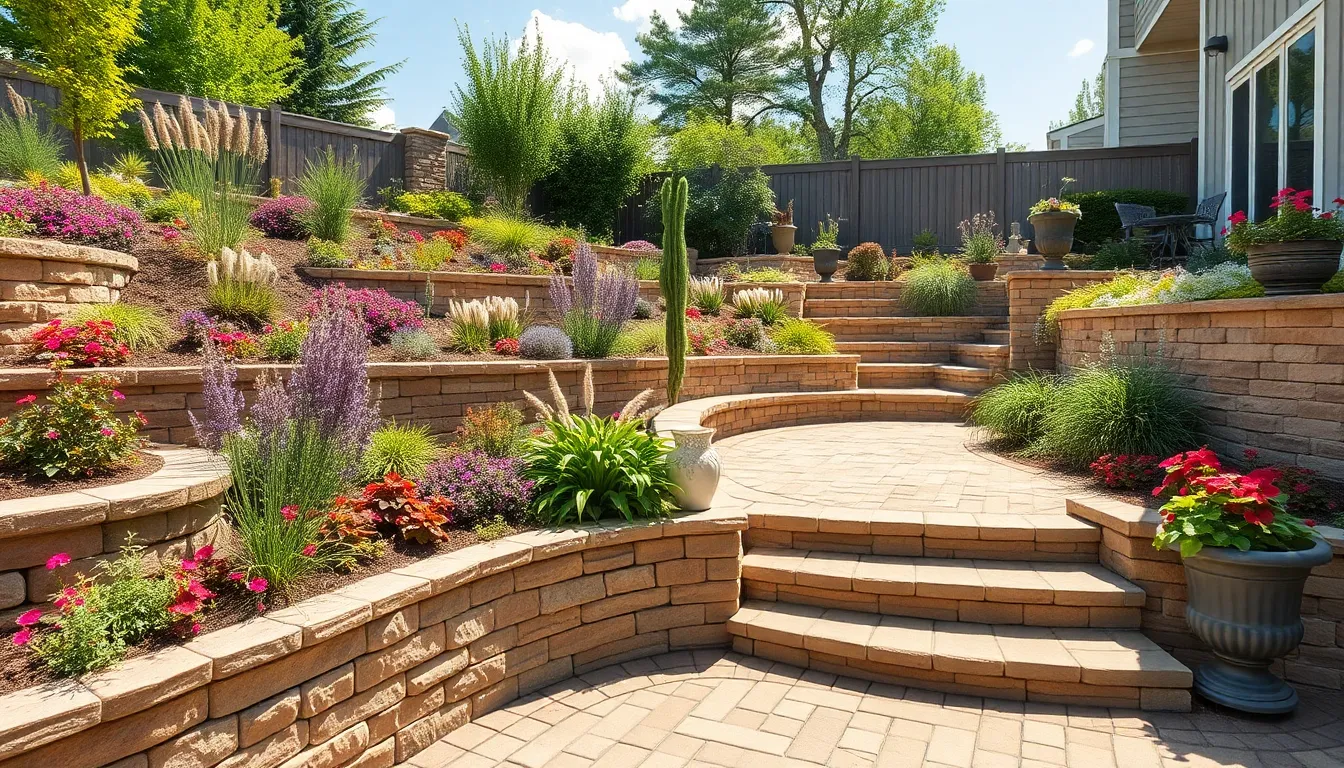
Retaining wall pavers create stunning dimensional landscapes that maximize both visual appeal and functional garden space. These versatile materials transform sloped areas into organized terraces while adding architectural interest to flat yards.
Terraced Garden Beds
Terraced garden beds using retaining wall pavers solve slope management challenges while creating distinctive planting zones. We can construct multiple levels that follow natural contours, with each tier measuring 18-24 inches in height for optimal plant accessibility. Each level accommodates different plant varieties, from tall perennials on upper tiers to groundcover on lower sections.
Stone retaining wall pavers work exceptionally well for traditional garden styles, offering natural drainage through their joints. Concrete retaining blocks provide modern clean lines and come in various textures that complement contemporary landscapes. Installing proper drainage behind each wall prevents water buildup and extends the structure’s lifespan significantly.
Different soil depths on each terrace allow us to grow diverse plants with varying root requirements. Upper levels suit drought tolerant species like lavender and ornamental grasses, while lower terraces accommodate moisture loving hostas and ferns. This elevation strategy creates natural microclimates that support greater plant diversity.
Raised Planter Borders
Raised planter borders constructed with retaining wall pavers define garden spaces while containing soil and mulch effectively. We recommend heights between 12-18 inches for easy maintenance access and visual balance with surrounding industry elements. These borders prevent soil erosion during heavy rains and create clean transitions between lawn and planting areas.
Interlocking retaining wall pavers eliminate the need for mortar while providing structural stability for planter borders. Cap stones on top edges create finished appearances and comfortable seating ledges for garden maintenance tasks. Corner blocks ensure professional looking joints and added structural integrity at connection points.
Design flexibility allows us to create curved borders that follow natural garden flow or geometric shapes for formal landscapes. Decorative aggregate backfill enhances drainage while reducing hydrostatic pressure against the paver walls. These borders also serve as root barriers, preventing aggressive plants from spreading into lawn areas.
Stepped Seating Areas
Stepped seating areas using retaining wall pavers transform slopes into functional outdoor gathering spaces. We design each step with 15-17 inch depths to accommodate comfortable seating while maintaining stable footing for users. Multiple tiers create amphitheater style arrangements perfect for garden parties or quiet contemplation.
Built in planters between seating levels soften the hardscape appearance and provide spots for colorful seasonal displays. Integrated lighting in wall faces creates dramatic evening ambiance while ensuring safe navigation on steps. Wide cap stones serve dual purposes as armrests and surfaces for drinks or gardening tools.
Strategic placement of these seating areas takes advantage of garden views and shade patterns throughout the day. Morning sun exposure on east facing steps creates warm breakfast spots, while afternoon shade on west facing areas provides cool evening retreats. Natural stone pavers blend seamlessly with garden surroundings, while colored concrete options complement modern outdoor furniture.
Design Curved Elements With Flexible Paver Options
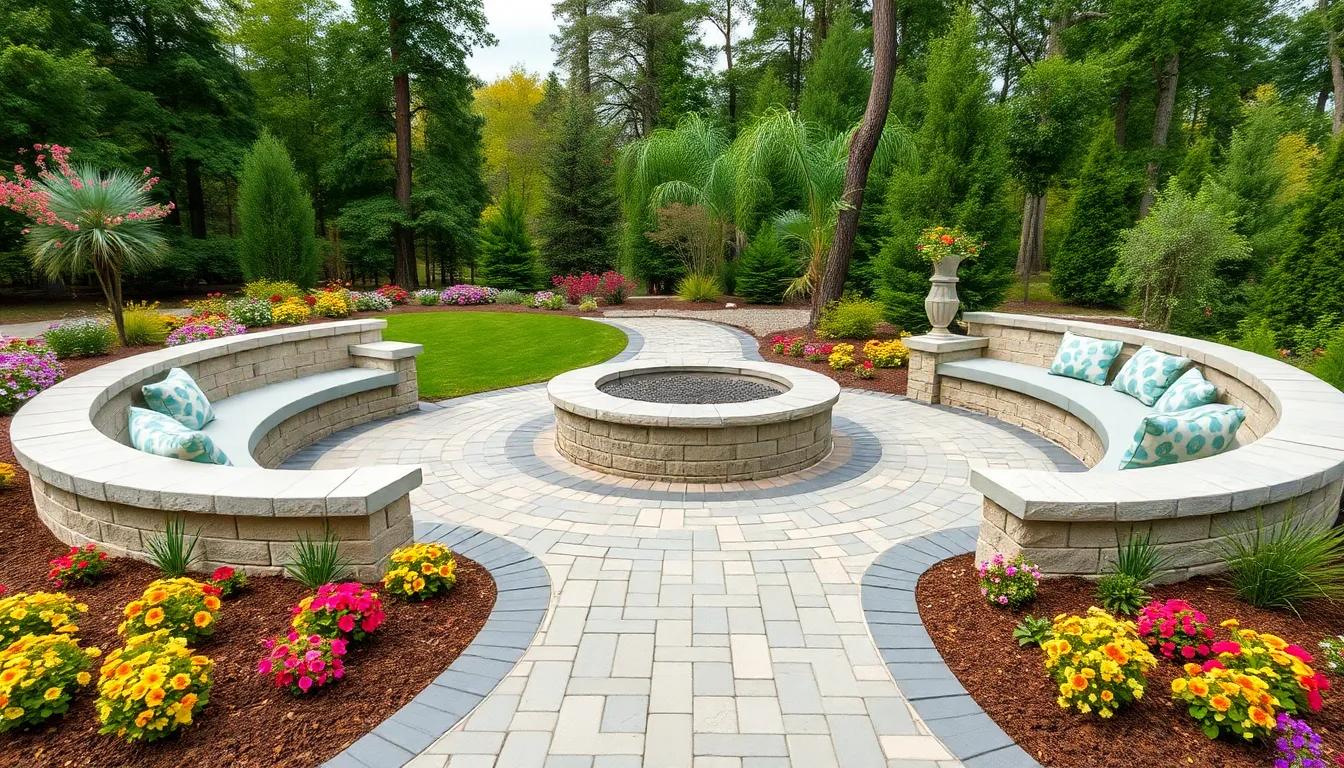
Flexible pavers unlock endless possibilities for creating flowing, organic shapes in your garden design. These innovative materials bend and conform to curved layouts that traditional rigid pavers simply can’t achieve.
Circular Fire Pit Surrounds
Circular fire pit designs using flexible pavers create stunning gathering spaces that become the heart of outdoor entertainment. We recommend installing these surrounds in diameters ranging from 8 to 12 feet to accommodate seating for 6 to 10 people comfortably. Flexible pavers conform perfectly to the curved perimeter, eliminating gaps that typically plague rigid paver installations around circular features.
Safety becomes paramount when designing these fire pit areas, and flexible pavers provide excellent heat resistance while maintaining their shape. The curved design naturally directs foot traffic around the fire pit, creating a safer environment for guests. Installation requires proper base preparation with a 4 to 6 inch gravel foundation to ensure long term stability of the curved structure.
Winding Garden Paths
Winding pathways using flexible pavers encourage exploration while creating visual interest throughout your industry. These meandering routes can curve around existing trees, flower beds, and other garden features without requiring extensive excavation or plant removal. We’ve found that paths with gentle S curves measuring 3 to 4 feet wide provide optimal accessibility while maintaining the organic flow.
Discovery becomes an integral part of the garden experience when paths wind through different zones of your outdoor space. Flexible pavers adapt to elevation changes along the route, conforming to gentle slopes without creating trip hazards. The installation process allows for real time adjustments during construction, letting you perfect the curve as you work.
Strategic placement of these winding paths connects distant garden areas while creating natural stopping points for contemplation. Maintenance stays minimal since flexible pavers move with ground settlement, preventing the cracking and separation common with rigid materials on curved installations.
Curved Seating Walls
Curved seating walls using flexible pavers serve dual purposes as both comfortable gathering spots and attractive retaining features. These structures typically range from 18 to 24 inches in height, providing optimal seating comfort while managing grade changes in your industry. We recommend incorporating planters directly into the wall design to create integrated growing spaces for flowers or herbs.
Functionality expands when curved seating walls follow the natural contours of your property, working with existing slopes rather than against them. Flexible pavers eliminate the complex cutting and fitting required for curved masonry work, reducing both installation time and material waste. The seamless curves create flowing lines that complement organic garden designs.
Integration with other industry features becomes effortless when seating walls curve around fire pits, water features, or prominent trees. These walls can incorporate built in lighting or drainage systems during installation, adding functionality without compromising the aesthetic appeal. The flexible nature of these pavers ensures long term performance even as the ground beneath settles or shifts with seasonal changes.
Create Low-Maintenance Solutions With Modern Paver Systems
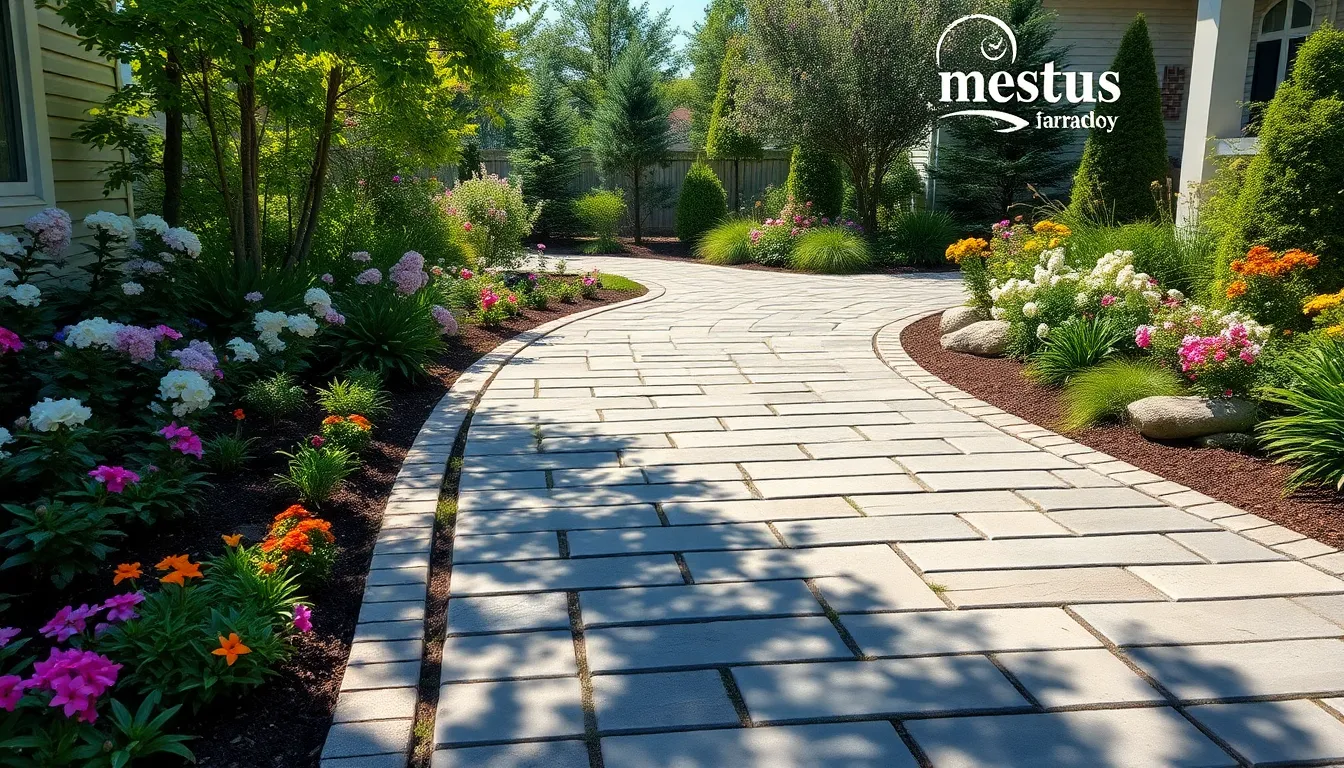
Modern paver systems revolutionize garden design by combining aesthetic appeal with minimal upkeep requirements. We’ll explore innovative installation techniques and materials that deliver professional results while reducing ongoing maintenance demands.
Self-Leveling Installation Methods
Sandbox base installation creates the foundation for long lasting paver stability and prevents settling issues over time. We recommend creating a leveling bed of sand beneath your pavers to ensure even distribution and eliminate future displacement problems. This method accommodates natural ground movement while maintaining surface integrity.
Polymeric sand application between pavers provides superior stability compared to traditional sand filling methods. Installing this specialized material creates a firm base that resists erosion from rain and foot traffic. The sand hardens when activated with water, forming a durable joint that maintains paver alignment for years.
Professional leveling techniques eliminate the guesswork from DIY installations and guarantee consistent results. We suggest using screed boards and string lines to achieve precise grade levels across your entire paver surface. These methods ensure proper drainage patterns while creating visually appealing finished surfaces.
Weed-Resistant Joint Materials
Polymeric sand formulations specifically target weed prevention by filling gaps completely and creating barriers to seed germination. This engineered material expands to seal joints tightly, preventing organic matter from accumulating where weeds typically take root. We’ve found this solution reduces maintenance time by up to 80% compared to regular sand installations.
Silica sand with growth inhibitors offers enhanced protection against persistent weed species in challenging garden environments. These specialized additives prevent seed germination without harming surrounding plants or soil health. The treatment remains effective for multiple seasons, providing long term protection against unwanted vegetation.
Professional grade sealants create impermeable barriers that stop weeds before they start growing between your pavers. We recommend applying these products after polymeric sand installation to maximize protection. This dual approach eliminates virtually all weed growth while maintaining the natural appearance of your paver joints.
Long-Lasting Surface Treatments
Paver sealer applications extend surface lifespan by protecting against stains, weather damage, and color fading from UV exposure. We suggest applying high quality sealers every 3-5 years to maintain optimal protection and appearance. These treatments also enhance color vibrancy while making routine cleaning significantly easier.
Regular maintenance protocols keep pavers looking new with minimal effort when proper techniques are followed consistently. Sweeping debris weekly prevents organic buildup that can lead to staining and deterioration. We recommend pressure washing annually to remove embedded dirt and restore original surface textures.
Protective coating systems offer advanced protection against harsh weather conditions and heavy foot traffic in high use areas. These specialized treatments penetrate paver surfaces to provide deep protection while maintaining breathability. The investment in quality surface treatments typically extends paver lifespan by 40-60% compared to untreated installations.
Conclusion
We’ve explored countless paver possibilities that can transform any garden into a stunning outdoor sanctuary. From natural stone walkways to eco-friendly permeable options and artistic mosaic accents each choice offers unique benefits for your industry design.
The beauty of garden pavers lies in their adaptability to any style or budget. Whether you’re drawn to traditional brick patterns rustic flagstone charm or modern concrete systems there’s a perfect solution waiting for your outdoor space.
With proper installation techniques and thoughtful design choices your paver project will deliver years of enjoyment and increased property value. We encourage you to start planning your garden transformation today – your dream outdoor space is just a few pavers away.
Frequently Asked Questions
What are the main benefits of using garden pavers?
Garden pavers offer versatility, cost-effectiveness, and enhanced curb appeal. They create attractive walkways and seating areas while being accessible for DIY installation. Pavers also increase property value and provide professional-looking results that transform ordinary outdoor spaces into stunning garden features.
Which natural stone pavers work best for garden walkways?
Flagstone offers rustic charm with excellent durability and slip resistance. Slate provides modern elegance with low maintenance and various color options. Sandstone delivers warm earth tones with excellent traction, suitable for both traditional and contemporary garden designs.
How do brick pavers enhance patio spaces?
Brick pavers create timeless aesthetics with minimal maintenance requirements. Traditional red brick layouts suit established neighborhoods, while herringbone patterns add visual interest and structural stability. Mixed brick colors allow for personalized designs that maintain cohesive outdoor aesthetics.
What makes concrete pavers ideal for garden borders?
Concrete pavers excel at defining spaces and managing soil with their versatility. Interlocking designs provide clean lines and easy DIY installation. Decorative shapes and textures enhance aesthetic appeal, while strategic color choices create focal points and maintain design cohesion.
What are eco-friendly paver alternatives?
Permeable pavers reduce stormwater runoff and urban heat effects. Grass pavers allow natural growth through openings, providing structural integrity. Gravel-filled pavers offer excellent drainage with minimal maintenance. Porous concrete manages rainwater while maintaining traditional appearance for sustainable landscaping.
How can mosaic and tile pavers add creative accents?
Ceramic tile patterns create Mediterranean charm with warm colors and intricate designs. Glass mosaic inserts produce stunning light reflections on walkways. Mixed material combinations, like pavers with gravel or natural stone borders, blend manufactured precision with organic textures for artistic appeal.
What are multi-level paver features?
Retaining wall pavers create dimensional landscapes and maximize garden space. Terraced garden beds solve slope challenges and enable diverse planting zones. Raised planter borders define spaces and prevent erosion. Stepped seating areas transform slopes into functional gathering spaces with integrated features.
How do flexible pavers work for curved designs?
Flexible pavers adapt to create circular fire pit surrounds with safety and heat resistance. They form winding garden paths that encourage exploration and adapt to existing features. Curved seating walls serve as functional gathering spots and attractive retaining features for seamless garden integration.
What modern paver systems reduce maintenance?
Modern systems include sandbox base installation for stability and polymeric sand for weed resistance. Professional leveling techniques and protective coatings ensure durability. These innovations combine aesthetic appeal with simplified upkeep, making them ideal for homeowners seeking style and practicality.
Are garden pavers suitable for DIY installation?
Yes, garden pavers are highly accessible for DIY enthusiasts. Many systems feature interlocking designs and straightforward installation processes. With proper preparation and basic tools, homeowners can achieve professional-looking results while saving on labor costs and gaining satisfaction from hands-on garden transformation.
